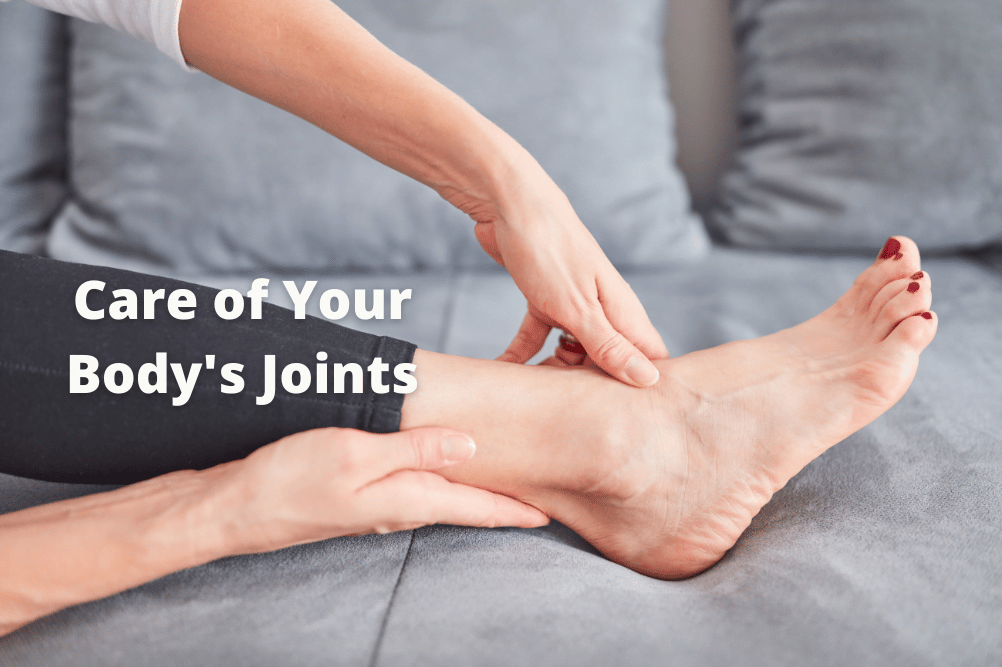While joint pain and issues are more commonly experienced by people who are middle-aged or above, joint problems can occur at any age and it’s important to learn how to properly take care of your joints. This article is going to be focused on offering some tips and advice on joint care for people of all ages. Get the most out of your joints by looking after them.
Eat the Right Food
Step one in caring for any part of your body, whether it be internally or externally, is to eat a healthy and balanced diet. You will want to ensure your diet is loaded with the necessary nutrients that are conducive to good bone and joint health. Let’s make a quick list of foods that are known to be great for joint health:
- Seeds and nuts
- Fish and fish oil
- Cruciferous vegetables
- Fruit
- Olive oil
- Garlic
- Whole grains
- Milk and dairy products
- Any food rich in calcium
- Soya beans
- Dark Chocolate
You should always strive to drink plenty of fresh water, as being dehydrated can also lead to uncomfortable dryness in the joints that lack synovial fluid.
Just as there are foods that are good for joint health, there are also some foods you should avoid, such as highly-processed foods, sugar and fried foods. Also avoid over-indulgence in alcohol (especially beer) and refrain from smoking tobacco products.
Supplements For the Joints
In a supplement-rich modern society, there are supplements you can take for just about any purpose, from building muscle mass to burning fat. There are also supplements specifically designed for joint health.
Fish oil capsules are one such supplement. Glucosamine is another popular one and this product also helps to reduce the chances of developing arthritis in the joints. Products that contain shark cartilage are considered beneficial for joint health and pain-free joints.
Green tea is also considered to be a fantastic joint health supplement, as well as any product that contains omega 3. Vitamin D is also vital for properly-functioning joints, bone strength and bone density. It also promotes healthy joint cartilage.
Build Muscle Strength Around Your Joints
No matter what age you are at in life, joints need to be preserved by being protected. The best and most natural way of protecting vital joints is to build up the strength of the muscles that are associated with or near those joints. This is obviously achieved through exercise.
Having said that, care needs to be taken during exercise in order not to damage or injure a joint in the process. Lifting weights incorrectly or weights that are simply too heavy are likely going to result in joint problems.
Hire a personal trainer or a member of the gym’s staff to demonstrate how to correctly use exercise equipment and how to lift free weights.
While jogging is a great exercise to shed calories, build stamina and improve cardiovascular fitness, it’s also high-impact and puts a lot on pressure on the joints; in particular the ankles, knees and hips. Brisk walking is generally a far better alternative that can still achieve desired outcomes while being low-impact.
Support Injured Joints
If you’re currently suffering from joint pain or an injury to the joint, it’s a good idea to support that joint for a time. Examples are a neoprene knee brace, wrist supports, elbow or ankle support bandages and so forth. It’s not a good idea to use these supports for lengthy periods, as they can weaken the joints and surrounding muscles, but they are very handy in the short term to provide additional support and protection for a wounded joint, especially during exercise.
As a side note, if an injured joint is swollen and stiff, try taking some over-the-counter anti-inflammatory medications to free up the joint and alleviate pain. Something with Ibuprofen in it usually does the trick. Applying an ice pack to the swollen area will also help to reduce the swelling and dull the pain.
Lose Weight
Carrying around excess weight in the form of body fat is going to load up those joints with extra pressure, whether you’re going about your work duties, performing everyday tasks, exercising or simply even walking around. Even hauling yourself up a staircase is going to place added load on the knees and ankles when you’re overweight.
Losing weight is beneficial on so many levels when it comes to your overall health and you’ll be doing your joints a massive favour in the process. Carrying around less weight also reduces wear and tear on the joints.
Aerobic exercises are a great way to lose weight without placing stress on the joints in the form of lifting weights.
Stretching For Joint Flexibility
Stretching every day is not only a great way to limber up and loosen up the muscles, it can also be beneficial for joint mobility too. This keeps joints moving freely, promotes the production of synovial fluid and also helps to reduce wear and tear and the possibility of developing arthritis.
You might want to consider learning yoga or Pilates as interesting forms of body stretching. If you have some limitations because of an injury or joint problem, attend professional classes and your instructor will devise methods for stretching that won’t hinder you.
The Takeaway
Taking care of your joints is something everyone should focus on, and it’s not that difficult to do with some focus and logical thought. Follow the advice in this article and keep your joints in perfect health and free from stiffness and pain.
https://vosct.com/best-foods-for-healthy-joints/
https://www.webmd.com/osteoarthritis/features/home-joint-care







